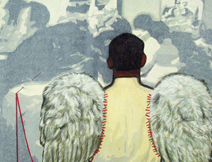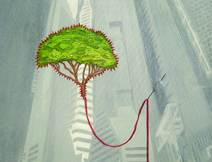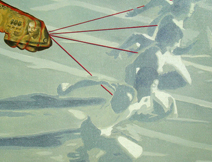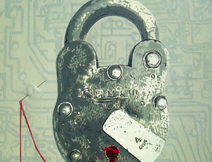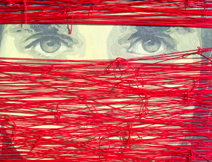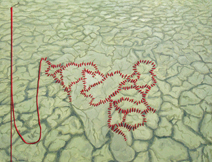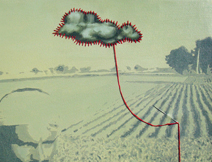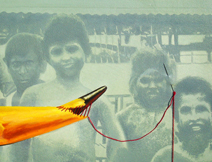Green Block Grey Tree
GREEN BLOCK AND GREY TREE is a pithy commentary on our topsy turvy world. Through a series of interconnected, but profusely disturbing, at times shocking, images it seeks to focus on some of the most significant yet the least cared for people, places, concerns and challenges around us. Factors that fundamentally make our lives go on, people without whom we cannot survive, are often also the ones we take the most for granted, unless and until they suddenly stop performing those necessary functions altogether. But that is always too late.
One of the most common life sustaining elements, for instance, is blood. As far as human body is concerned, blood is red in colour, which signifies at once vitality and danger, youth and alarm, boldness and boundary. The red thread, therefore, works through Nagarkar’s work as the ideal symbol of this dual reality, performing as the not so conspicuous connect between otherwise incompatible objects and images; presenting the truth, that is, the paradox of fundamental necessity and minimal attention. I think, at another level, the artiste and her vision are as much of a thread, moving around society and building bridges between the apparently unbridgeable, in order sometimes to forge a harmonious whole, and at others to try to heal. Human interaction with nature and its diverse, multilayered and polylogical implications are a case in point.
The works prescribe no fullproof solution. But they hold a mirror to vital entitlement inequalities that unfold so brazenly before our eyes that we wish them away. Literacy among slum children, or need for tree plantation within the concrete jungle are so well known issues, and yet so regularly taken note of only in neglect, that the artiste in these cases has necessarily to play the conscience keeper. The thread that holds the fundamental and the mortally neglected within a common frame reappears here as the call to account for such foolish, criminal, and persistent, neglect of a part of our collective self, to the detriment of every one of us in the long run.
Yet another social pathology that stalks our real and virtual worlds and lives today more than ever is cybercrime. The popular computer security dictum – humans are the weakest link in the security of a network – actually holds true. If all internet users understood the risks involved and knew how to tackle basic security attacks, the internet would definitely be a much safer and better communication exchange network to be associated with. There are, therefore, three distinct, yet overlapping, thematic perspectives from which the artiste revisits being a thread connecting the vital with the neglected. If the increasingly baffling complexity in the man-nature trade off comprises one end of the vital yet neglected spectrum, cybercrimes constitute the other. The third, and perhaps the central and the richest, thematic vantage point explores the threats and stunted promises haunting the future of the urban children, with a whole range of entitlement disparities and asymmetrical opportunity structures putting a premium on dreams of liberation and change.

